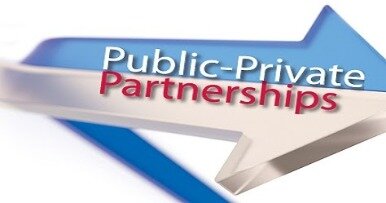
Markson’s & co. has a difference in balance as per cash book and bank statement as on 31st March 2021. Once the balances are equal, businesses need to prepare journal entries for the adjustments to the balance per books. Bank errors are mistakes made by the bank while creating the bank statement.
If the bank has added legitimate entries, you need to make adjustments in your books so the two reflect the same transactions. If you have access to online banking, you can download the bank statements in order to undertake the bank reconciliation process at regular intervals instead of manually entering the information. Before you reconcile your bank account, you should ensure that you record all the transactions of your business until the date of your bank statement. Journal entries, also known as the original book of entries, refer to the process of recording transactions as debits and credits. Once the journal entries are recorded, the general ledger is prepared. You first need to determine the underlying reasons responsible for the mismatch between balance as per cash book and passbook.

The company can now take steps to rectify the mistakes and balance its statements. Reconciliation spotlights any irregularities between your financial statement and bank statement, such as an outstanding check or electronic transfers. Reconciling your bank statement enables you to see if there are any irregularities, such as entering wrong amounts, duplicating entries and other data entry errors. There’s nothing harmful about outstanding checks/withdrawals or outstanding deposits/receipts, so long as you keep track of them.
Driven by artificial intelligence, the software transforms reconciliations from a reactive to proactive process by detecting anomalies, making it faster and accurate. Powered by technologies, such as AI/ML, advanced bank reconciliation software make anomaly detection, variance analysis, and financial close task management easier for analysts. Discover how a bookkeeper can help you stay compliant, monitor your cash position and stay ahead of potential fraud or process errors. Reconciling your bank statement is essential for you to generate a correct tax return. More specifically, you’re looking to see if the “ending balance” of these two accounts are the same over a particular period (say, for the month of February).
Struggling to manage variances during bank account reconciliation?
They also explain any delay in the collection of cheques, and they identify valid transactions recorded by one party but not the other. In the case of items in transit, these arise from several circumstances. The firm’s account may contain a debit entry for a deposit that was not received by the bank prior to the statement date. This might be in a logbook, on a spreadsheet, or in an accounting software package.
Businesses that use online banking service can download the bank statements for the regular reconciliation process rather than having to manually enter the information. For example, say ABC Holding Co. recorded an ending balance of $500,000 on its records. After careful investigation, ABC Holding found that a vendor’s check for $20,000 hadn’t been presented to the bank.
Such errors are committed while recording the transactions in the cash book. As a result, the balance as per the cash book differs from the passbook. At times, the balance as per the cash book and passbook may differ due to an error committed by either bank or an error in the cash book of your company.
Bank Reconciliation Record Keeping
It allows businesses to identify any expected payments that haven’t been made, and detect fraud. Bank reconciliation can also help businesses quickly identify any disruptions in their cash flow. Match the deposits in the business records with those in the bank statement. To quickly identify and address errors, reconciling bank statements should be done by companies or individuals at least monthly. They also can be done as frequently as statements are generated, such as daily or weekly. Non-sufficient funds (NSF) checks are recorded as an adjusted book-balance line item on the bank reconciliation statement.
The account holder is responsible for preparing a bank reconciliation to identify differences between the cash balance and the bank statements. Interest income reported on the bank statement has usually not been accrued by the company and, therefore, must be added to the company’s book balance on the bank reconciliation. The final transaction listed on the Vector Management Group’s bank statement is for $18 in interest that has not been accrued, so this amount is added to the right side of the following bank reconciliation. In order to prepare a bank reconciliation statement, you need to obtain the current as well as the previous month’s bank statements and the cash book. An outstanding cheque refers to a cheque payment that has been recorded in the books of accounts of the issuing company. But, the cheque has not yet been cleared by the bank as a deduction from the company’s cash balance.
Rather than manually reviewing and reconciling accounts, the system automatically reconciles based on pre-determined criteria. Since the Vector Management Group paid Ad It Up $63 more than the books show, a $63 debit is made to decrease the accounts payable balance owed to Ad It Up, and a $63 credit is made to decrease cash. In other words, the adjusted balance as per the bank must match with the adjusted balance as per the cash book.
However, such deposited cheques or discounted bills of exchange drawn by your business entity get dishonored on the date of maturity. One of the primary reasons responsible for such a difference is the time gap in recording the transactions of either payments or receipts. After adjusting all the above items what you get is the adjusted balance of the cash book. Therefore, an overdraft balance is treated as a negative figure on the bank reconciliation statement. As mentioned above, bank overdraft is a condition where a bank account becomes negative as a result of excess withdrawals over deposits.
Although separate journal entries for each expense can be made, it is simpler to combine them, so bank fees expense is debited for $70 and cash is credited for $70. Companies may authorize a bank to automatically transfer funds into or out of their account. Automatic withdrawals from the account are used to pay for loans (notes or mortgages payable), monthly utility bills, or other liabilities. Automatic deposits occur when the company’s checking account receives automatic fund transfers from customers or other sources or when the bank collects notes receivable payments on behalf of the company. If both the balances are equal, it means the 3 Ways to Write a Receipt has been prepared correctly.
Direct Deposits into the Bank Account
If so, these entries will not appear in the bank reconciliation statement prepared at the end of the current month. A bank reconciliation statement is prepared at the end of the month. The entries in the statement stop being the cause of discrepancies after a few days. The bank reconciliation statement explains the difference between the balance in the company’s records and the balance in the bank’s records. Nowadays, many companies use specialized accounting software in bank reconciliation to reduce the amount of work and adjustments required and to enable real-time updates.
- We’re going to look at what bank statement reconciliation is, how it works, when you need to do it, and the best way to manage the task.
- Once the journal entries are recorded, the general ledger is prepared.
- In addition to ensuring correct cash records, the bank reconciliation process also helps in keeping track of the occurrence of any form of fraud.
- The more frequently you reconcile your bank statements, the easier it is each time.
A credit memorandum attached to the Vector Management Group’s bank statement describes the bank’s collection of a $1,500 note receivable along with $90 in interest. The bank deducted $25 for this service, so the automatic deposit was for $1,565. The bank statement also includes a debit memorandum describing a $253 automatic withdrawal for a utility payment. On the bank reconciliation, add unrecorded automatic deposits to the company’s book balance, and subtract unrecorded automatic withdrawals. Differences in the cash account balance and bank statement balance are common. Many are the result of timing differences or small fees directly assessed in the bank account.
Step two: Adjusting your balances
It also missed two $25 fees for service charges and non-sufficient funds (NSF) checks during the month. After you have adjusted the bank balance and cash account balance, the two should match. If the adjusted balances still don’t match, go back through the previous steps to identify the discrepancy.
Create a free account to unlock this Template
As a result, the balance showcased in the bank passbook would be more than the balance shown in your company’s cash book. The purpose behind preparing the bank reconciliation statement is to reconcile the difference between the balance as per the cash book and the balance as per the passbook. Typically, the difference between the cash book and passbook balance arises due to the items that appear only in the passbook. Therefore, it makes sense to first record these items in the cash book to determine the adjusted balance of the cash book. These outstanding deposits must be deducted from the balance as per the cash book in the bank reconciliation statement.
Our experts are ready to help improve your financial close process solutions. Accountants don’t have to spend the majority of their time reconciling by hand and auditors no longer have to sift through piles or complicated document reservoirs to find the information they need. Lastly, an automated audit trail is generated alongside reconciliations and task completion. The audit trail includes a history of supporting documentation along with all activity that happens throughout the process. Whether for an internal or external audit, an auditor-only view can be created so that the viewers can only see the information required for the audit. You come to know about such deductions only when you receive the statement from the bank.
Once the underlying cause of the difference between the cash book balance and the passbook balance is determined, you can make the necessary corrections in your books of accounts to ensure accuracy. A bank reconciliation is the process of matching the balances in an entity’s accounting records for a cash account to the corresponding information on a bank statement. The goal of this process is to ascertain the differences between the two, and to book changes to the accounting records as appropriate. The information on the bank statement is the bank’s record of all transactions impacting the entity’s bank account during the past month.
 We are away from the 05/09/2022 until the 20/09/2022. Orders placed during this time may experience delays. Sorry for any inconvenience
We are away from the 05/09/2022 until the 20/09/2022. Orders placed during this time may experience delays. Sorry for any inconvenience